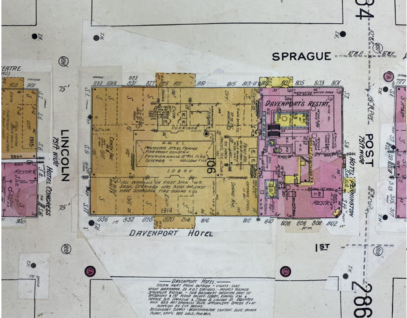Sara Ganzerli, Alli Willmarth, and Ally Delaney
i Professor, Gonzaga University, Spokane, Washington, USA, ganzerli@gonzaga.edu
ii Student, Gonzaga University, Spokane, Washington, USA, awillmarth@zagmail.gonzaga.edu
iii Student, Gonzaga University, Spokane, Washington, USA, adelaney@zagmail.gonzaga.edu
ABSTRACT
Spokane: a small town nestled in the pacific northwest, revolutionized by economic prosperity into a jewel of Washington State, US. Spokane holds unique architectural features, specifically in masonry, shaped by environmental and economic factors at the end of the eighteenth century. After a devastating fire in 1889, rapid reconstruction efforts focused on masonry buildings with steel reinforcements due to their fire-resistant qualities. At the same time Spokane experienced significant growth as it became a stop on the railroads that connected the US Coasts. This allowed the new buildings to be constructed taller than ever before. One of these buildings is the historical Davenport hotel. The luxury Inn provided a place of rest for weary travelers. The hotel still stands tall along the Spokane skyline and provides a major masonry landmark. In the mid 1980’s economic challenges were felt harshly throughout downtown Spokane as growth declined. After a series of hardships in 1985 the Davenport filed for bankruptcy and its doors were closed. However, the hotel’s legacy would not end there. Walt and Karen Worthy purchased the hotel and restored it to its former glory. In 2002 the Davenport was reopened, maintaining the original luxury as its grand opening in 1914. The revitalization of the Davenport marked another period of growth in Spokane, and allowed restaurants, entertainment venues, and shops to flourish. The Davenport is an excellent example of a masonry building that has been pivotal for the economic wellbeing of its city. The effects of its revitalization show how preservation of historic buildings can provide fundamental change for the economy and prosperity of their context. This paper will focus on the challenges and solutions which arose during the renovation of this historic landmark.
KEYWORDS: Clay bricks, existing buildings, renovation, historical preservation, fire resistance.
053-Ganzerli.pdf



